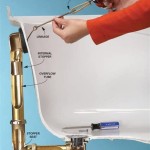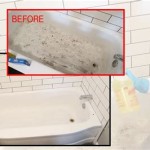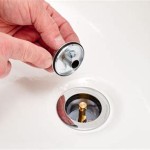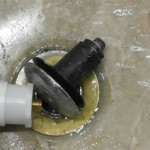How To Attach a Garden Hose to a Bathtub Faucet
Connecting a garden hose to a bathtub faucet can be a useful solution for various tasks, such as filling large containers, cleaning items that are too large to fit in a sink, or even supplying water to a temporary outdoor water feature. However, bathtub faucets are not designed to directly accommodate a garden hose, necessitating the use of specialized adapters and techniques. This article provides a comprehensive guide on how to securely and efficiently attach a garden hose to a bathtub faucet, outlining the necessary materials, step-by-step instructions, and essential considerations for a successful connection.
The primary obstacle in attaching a garden hose to a bathtub faucet lies in the difference in threading and fitting types. Garden hoses typically use a standard ¾-inch Garden Hose Thread (GHT), while bathtub faucets employ a variety of spout designs and threading, if any. Overcoming this mismatch requires employing an adapter that can bridge the gap between the faucet's outlet and the garden hose's inlet. Choosing the correct adapter is paramount for ensuring a leak-proof and secure connection.
Before proceeding with any connection, the safety aspect must be prioritized. Water pressure can vary significantly, and it's crucial to manage it responsibly to prevent damage to plumbing or the hose itself. Similarly, proper sealing is essential to prevent water wastage and potential water damage to the surrounding area. This article will cover preventative measures and best practices to mitigate these risks.
Understanding the Necessary Materials
Successfully attaching a garden hose to a bathtub faucet requires gathering the appropriate tools and materials. The most crucial item is a suitable adapter, but other supporting materials are equally vital for creating a secure and leak-free connection. This section details the essential components needed for this task.
Garden Hose Adapter: The heart of this project is the adapter itself. Different types of adapters are available, each designed for specific faucet types. Common options include:
- Faucet Adapter with Universal Rubber Sleeve: This type features a conical rubber sleeve that fits over a variety of faucet spouts. A tightening mechanism secures the sleeve to the faucet, creating a seal. These are generally versatile but might not be suitable for faucets with irregular shapes or protrusions.
- Threaded Faucet Adapter: If the bathtub faucet has external threads, a threaded adapter that matches the thread size can be directly screwed onto the faucet. This provides a more secure connection compared to the rubber sleeve type. Measurement of the faucet thread is essential before purchasing this type of adapter.
- Aerator Adapter: Some bathtub faucets have a removable aerator. An adapter specifically designed to replace the aerator and provide a garden hose connection can be used. This option typically offers a cleaner and more direct connection.
The choice of adapter depends heavily on the type of faucet. Visually inspecting the faucet and noting its features, such as the presence of threads or a removable aerator, is crucial for selecting the correct adapter.
Garden Hose: A standard garden hose with intact threading is essential. Examine the hose for any cracks, leaks, or damage to the threading, as these can compromise the connection and lead to water wastage.
Plumber's Tape (Teflon Tape): Plumber's tape, also known as Teflon tape, is used to create a watertight seal on threaded connections. Wrapping the tape around the threads before connecting the adapter helps to prevent leaks and ensures a secure fit.
Adjustable Wrench or Pliers: These tools might be needed to tighten the adapter onto the faucet or to remove the aerator, if applicable. Using an adjustable wrench allows for a customized fit, preventing damage to the faucet's finish.
Bucket or Towel: Having a bucket and towel on hand is essential for catching any drips or spills that might occur during the connection process. This helps to prevent water damage and keeps the workspace clean.
Step-by-Step Connection Process
Once the necessary materials are gathered, the connection process can begin. Following a systematic approach ensures a secure and leak-free attachment of the garden hose to the bathtub faucet. This section provides a detailed guide on the connection process, covering various adapter types and potential challenges.
1. Identifying the Faucet Type: The first step involves carefully examining the bathtub faucet to determine its type. Look for external threads, a removable aerator, or any other distinguishing features. This information is crucial for selecting the appropriate adapter.
2. Preparing the Faucet: Depending on the faucet type, preparation might involve removing the aerator. If the faucet has an aerator, use an adjustable wrench or pliers to carefully unscrew it. Turn the aerator counterclockwise to loosen it. Be mindful not to damage the faucet's finish during this process. Clean the faucet spout of any debris or mineral buildup. A clean surface ensures a better seal with the adapter.
3. Applying Plumber's Tape: If the chosen adapter has threaded connections, apply plumber's tape to the male threads. Wrap the tape clockwise around the threads, overlapping each layer slightly. Apply several layers of tape to ensure a secure seal. The tape helps to fill any microscopic gaps in the threads, preventing leaks.
4. Connecting the Adapter: Carefully attach the adapter to the faucet. If using a threaded adapter, screw it onto the faucet's threads, turning it clockwise. Tighten the adapter using an adjustable wrench, but avoid over-tightening, as this can damage the faucet or the adapter. If using a universal rubber sleeve adapter, slide the sleeve over the faucet spout and tighten the clamp or locking mechanism. Ensure the sleeve is snug and secure against the faucet to prevent leaks.
5. Connecting the Garden Hose: Once the adapter is securely attached to the faucet, connect the garden hose to the adapter. Screw the garden hose's female end onto the adapter's male end, turning it clockwise. Tighten the connection by hand until it is snug. Avoid using tools to tighten the hose, as this can damage the hose's threading.
6. Testing for Leaks: After connecting the hose, slowly turn on the water at the faucet. Observe the connection points for any leaks. If leaks are present, turn off the water and tighten the connections further. If leaks persist, disassemble the connections, reapply plumber's tape, and reassemble. Ensure all connections are snug and secure before turning the water on again.
7. Managing Water Pressure: It is essential to control the water pressure when using a garden hose connected to a bathtub faucet. Start with a low water pressure and gradually increase it as needed. Avoid using full water pressure, as this can strain the connections and potentially damage the plumbing or the hose itself. Monitor the hose and connections for any signs of stress or leakage.
Key Considerations for a Secure and Safe Connection
Beyond the basic connection process, several key considerations contribute to a secure, safe, and long-lasting setup. Addressing these considerations proactively minimizes the risk of leaks, damage, and potential hazards. This section highlights these important factors.
Compatibility of Materials: Ensure that the adapter and hose are compatible with the type of water being used. For example, if using the hose for potable water, ensure all components are lead-free and certified for drinking water use. Using incompatible materials can lead to corrosion, contamination, and potential health risks.
Preventing Backflow: Backflow occurs when water flows in the reverse direction, potentially contaminating the water supply. To prevent backflow, consider using a backflow preventer. A backflow preventer is a device that allows water to flow in only one direction, preventing it from flowing back into the plumbing system. These devices are readily available at hardware stores and are relatively easy to install.
Regular Inspection and Maintenance: Regularly inspect the connections for any signs of wear and tear, such as cracks, leaks, or corrosion. Replace any damaged components immediately. Periodically tighten the connections to ensure they remain secure. Proper maintenance extends the lifespan of the connections and prevents potential problems.
Water Pressure Regulation: As mentioned previously, managing water pressure is crucial. High water pressure can strain the connections and lead to leaks or even burst hoses. Consider installing a pressure regulator to maintain a consistent and safe water pressure. A pressure regulator automatically reduces the water pressure to a preset level, preventing damage to the plumbing system and the hose.
Protecting the Faucet Finish: When using tools to tighten the adapter, protect the faucet's finish by using a soft cloth or tape between the tool and the faucet. This prevents scratches and damage to the finish, preserving the faucet's appearance. Additionally, avoid using excessive force when tightening the connections, as this can also damage the finish.
Storage and Disconnection: When not in use, disconnect the garden hose from the faucet and store it properly. Drain any remaining water from the hose to prevent freezing and damage during cold weather. Store the hose in a cool, dry place, away from direct sunlight. Disconnecting the hose when not in use prevents potential leaks and water damage.
By carefully considering these factors and following the steps outlined in this article, a secure and safe connection between a garden hose and a bathtub faucet can be successfully achieved. Remember that attention to detail and a proactive approach to maintenance are key to a long-lasting and trouble-free setup.

No Shower Problem Install A Diverter In 1 Hour The Art Of Doing Stuff

How To Attach A Garden Hose Kitchen Faucet Easy Diy

Rinseroo Tub Faucet Hose And Sprayer Slips On To Spout For Hair Washing Baby Or Dog Bath Bathtub Showerhead Attachment Shower Adapter Fits All Spouts Up

How To Hook A Garden Hose Shower Head This Is What You Need

Bathtub Sprayer View 1 Bathroom Faucets Diy Clean

Danco Versa Spray 1 Portable 2 In Freestanding Handheld Shower Head Sprayer For Bathtubs Without Diverter White 10086 The Home Depot

Danco Versa Spray 1 Portable 2 In Freestanding Handheld Shower Head Sprayer For Bathtubs Without Diverter White 10086 The Home Depot

Rinseroo Tub Faucet Hose And Sprayer Slips On To Spout For Hair Washing Baby Or Dog Bath Bathtub Showerhead Attachment Shower Adapter Fits All Spouts Up

Rinseroo Bathtub Faucet Sprayer Attachment Slip On Dog Shower Hose Adapter No Install Pet Showerhead Attaches To Tub Spout 5 Foot Yahoo Ping

Klleyna Shower Head Sink Faucet Bathtub Bathroom Garden Hose Sprayer Attach
Related Posts








